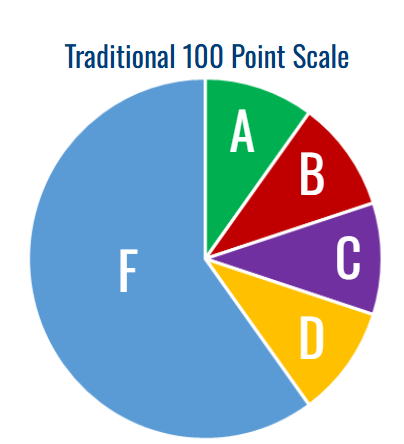Remember the email sent by administration describing yet another change with the way our
grading system works? It is here after Perry Township Schools replaced its 14-point grading
scale with a system more modeled after the previous one. Reverting back to the majority of a
grade, 80%, comes from performance tasks like tests, labs, and projects, and just 20% comes
from basic practice work. The shift is set to change how teachers teach, how students study and
how grades tell the story of learning.
English department head Jessica Hunter called her first reaction “a jubilant celebration of
excitement” over returning to a traditional grading scale, which she thinks better shows student
growth and learning. Believing the change will help students track their progress more clearly,
especially high-achieving students who struggled to maintain top grades under the 14-point
system. “I think that the traditional grading scale is more equitable and accurate in measuring
student growth and learning,” Hunter said, “Isn’t that what a grading scale should be?”
The district aims to balance encouraging student effort and maintaining high academic
standards. Claiming that the changes are designed to provide more accurate and meaningful
feedback about academic progress in each content area. Prior, a retake policy was set by each
teacher, but now, according to an informational pamphlet handed out by the district, students will
be able to retake any performance assignment or make-up with a corrective assessment,
regardless of grade. To qualify, students first have to make a valid attempt at the assignment. To
most teachers, this means meeting the basic requirements and showing a genuine effort.
Hunter made it clear, “The corrective assessment for essays is the process,” Hunter said. The
assessment is built into the process, from prewriting to multiple drafts, so by the time a final
paper is submitted, it should be a student’s best work. “If a student has not worked through the
process and just threw a paper together, I’d challenge them to look at the district policy saying
there must’ve been a valid attempt,” Hunter said. The ongoing challenge, she added, will be
keeping students motivated throughout the process.
Scott Simmonds, science department chair, welcomed the end of the 14-point system. He felt
that it made it too easy for students to pass without putting in real effort, while also making it
harder for top students to earn an A. He views the new scale as a middle ground that
challenges students.
Simmonds expects fewer, more meaningful performance assignments, with larger, point-based
practice assignments playing a bigger role. In his classes, smaller assignments act as building
blocks for bigger projects, meaning skipping them can hurt overall performance. To keep
students engaged, Simmonds plans to expand project-based learning and labs, such as biology
projects where students create “macro meal” recipe cards that combine nutrition with
biochemistry concepts.
Social studies department chair Nathan Orme believes the updated scale will be easier for
students, teachers and parents to comprehend. “The old system confused students who
struggled to see how individual assignments impacted their final score,” Orme said, “The new
system gives teachers more control to support students through weighted assignments and
tailored opportunities for improvement.” The social studies department will continue to meet and
discuss strategies for handling essays and DBQs.
Students who excel on projects and tests may see higher grades under the new system, while
those who rely on homework to boost scores could face challenges. The 80/20 split adds
pressure on big assignments and requires studying. Reassessment opportunities could be a
safety net for some, but minimal effort won’t be a valid attempt.
As the first quarter meets the halfway mark, teachers and students will be learning the ins and
outs of the new grading system. Whether it improves grades or creates new challenges, this
year’s grades will be done in a very different way from the previous year.








